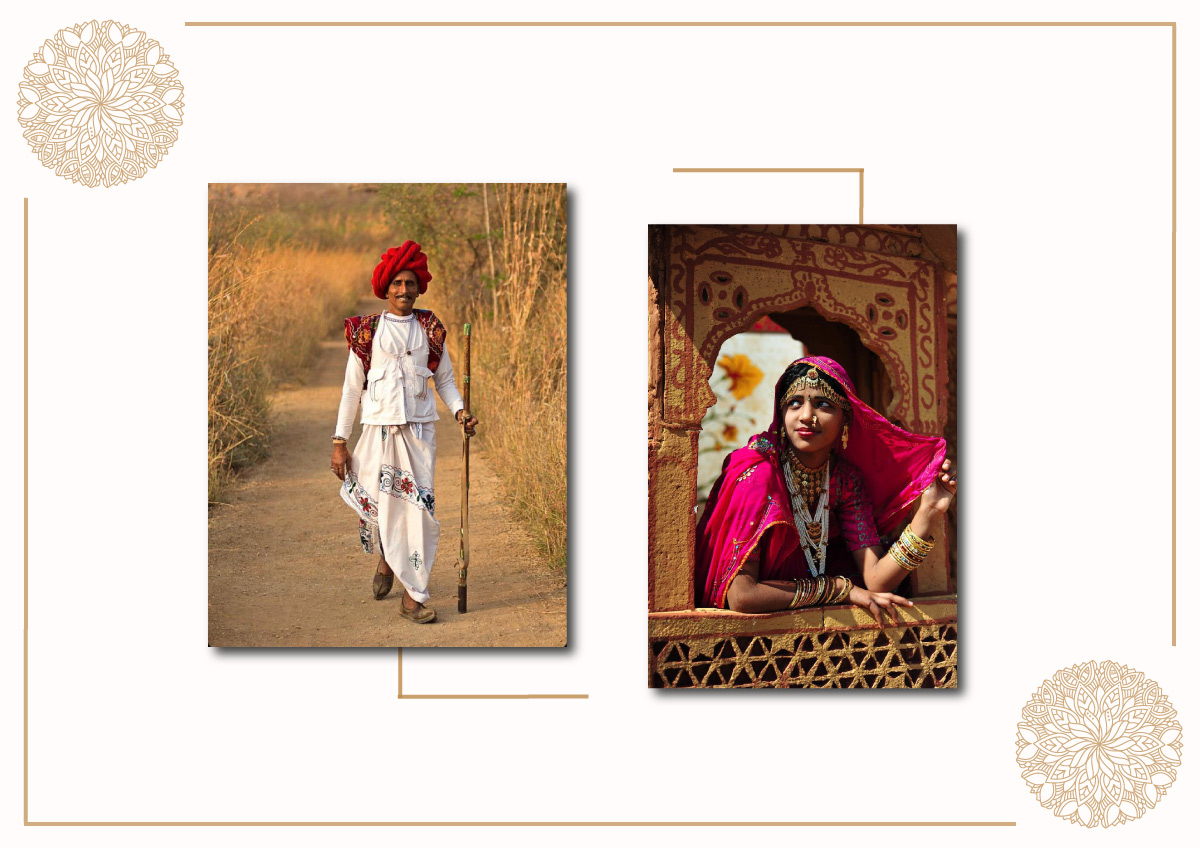Top 10 Traditional Dresses of India | Traditional Indian Clothing
India - a land of vibrant colours, intricate patterns, and exquisite craftsmanship, blending beautiful embellishments with rich fabrics. The age-old traditions, culture, and heritage are deeply reflected in the traditional clothing of India. From the elegant Kanjeevaram sarees of Tamil Nadu to the colourful Ghagra Cholis of Rajasthan, the traditional clothing of India is diverse, each embodying unique styles, traditions, and artistry.
This blog will take you across the length and breadth of the nation, showcasing the distinct Indian traditional dresses that have captivated hearts and minds for centuries. Join us as we explore the cultural significance of Indian traditional attires, revealing the stories behind the fabrics and the people who wear them.
Check out the different types of sarees for different occasions, to perfectly match the celebrations.
Traditional Clothing of India: Diversity in Clothes
The traditional clothing of India is a testament to the diverse cultures that have flourished over millennia. From Kashmir to Kanyakumari, Indian traditional attire plays a crucial role in festivals, religious ceremonies, and celebrations, showcasing their identity and unique practices.
During events like Diwali, Navratri, and weddings, people don their most exquisite traditional Indian dresses to honour their cultural heritage and express their identity. These Indian cultural clothing styles significantly vary from region to religion, people and community.
Top 10 Traditional Indian Clothing
Let's explore the different traditional dresses of India for men and women across ten Indian states.
Tamil Nadu
Source: Pinterest
Renowned for its exquisite silk sarees, Tamil Nadu's traditional choices include, Sarees for women, particularly the Kanjeevaram Sarees. Crafted from high-quality silk fabric, these sarees boast vibrant colours and intricate designs. Young girls wear a traditional skirt called Paavadai adorned with a top (Satttai) or a blouse, further enhanced with a shawl or dupatta, resembling the traditional lehenga. Men traditionally wear the Veshti (dhoti), paired with an Angavastram (Short-shawl) reflecting the deep-rooted tradition culture and tradition.
Explore the types of Kanchipuram silk sarees for weddings with pure kanjivaram motifs.
Kerala
Source: Pinterest
Kerala’s traditional costumes are known for their distinctive white and gold colour blend, exuding simplicity and elegance. The Kasavu Saree in pristine white or cream white is a symbol of purity and grace. Another traditional clothing of women is the Set Mundum - an ancient form of the saree in two pieces. Similar to TN, kerala men adorn a Mundu and Veshti, made from traditional handloom fabrics.
Rajasthan
Source: Pinterest
The traditional indian attire of Rajasthan is a vibrant display of colour and craftsmanship. Women wear the Ghagra Choli, adorned with Bandhani patterns and intricate embroidery. While Men wear the Angrakha, a traditional tunic, paired with a Dhoti and a Pagri. The vibrant colours and mirror work make Rajasthani attire stand out, showcasing the region's artistic heritage.
Gujarat
Source: Pinterest
Gujarat's traditional clothing is celebrated for its rich textiles and energetic colours. Girls wear the Chaniya Choli, often embellished with Bandhani tie-dye and embroidery designs and women adorn the beautiful Patola Sarees, with complex weaving patterns. Men wear the Kediyu, paired with a Dhoti and a colourful Turban, symbolizing the bold and expressive traditional attire of India.
Check out the art of traditional bandhani silk sarees by Tulsi Silks.
Punjab
Source: Pinterest
The Indian cultural clothing of Punjab is both vibrant and comfortable. Women wear the Patiala Salwar, known for its pleated design, paired with a Phulkari Dupatta featuring intricate embroidery. Men don the Kurta Pajama, accompanied by a Turban. The bold colours and Phulkari work highlight the rich heritage and the importance of traditional Indian attire in everyday life.
West Bengal
Source: Pinterest
West Bengal's traditional clothing blends simplicity with sophistication. The Tant Saree is known for its lightness and comfort, while the Baluchari Saree, with its intricate weaving and storytelling motifs, is a work of art. Men typically wear the Dhoti and Kurta, reflecting Bengal's literary and cultural heritage.
Assam
Source: Pinterest
Assam's traditional Indian attire is renowned for its unique weaving techniques and luxurious silks. The Mekhela Chador, worn by women, combines beauty with comfort. Men wear the Dhoti paired with a Gamosa, a traditional handwoven cloth. Eri and Muga silk, indigenous to Assam, add exclusivity to these garments, reflecting the region's textile heritage and clothing diversity in India.
Maharashtra
Source: Pinterest
Maharashtra's traditional clothing reflects its rich cultural heritage. Women don the vibrant-coloured Paithani Saree with traditional and intricate motifs. The distinctive style of Nauvari Saree draping is both functional and elegant. Men typically wear the Dhoti and Kurta, complemented by the Pheta, a traditional turban, symbolizing honour and pride in wearing the traditional attire.
Read to know the 15 latest different types of modern & traditional saree wearing & draping styles for weddings & parties.
Karnataka
Source: Pinterest
Karnataka's traditional Indian clothing is celebrated for its high-quality silk and distinctive weaving patterns. The Ilkal Saree, known for its red borders and pallu, is a popular choice among women. The Mysore Silk Saree, with its luxurious texture and intricate designs, is highly prized. Men wear the Panche, similar to the Dhoti, paired with the Angavastram.
Odisha
Source: Pinterest
Odisha's traditional Indian attire is renowned for its unique Ikat weaving technique and vibrant colours. The Sambalpuri Saree, with its distinct patterns and designs, showcases the weaver's skill. Men typically wear the Dhoti and Kurta, reflecting Odisha's rich textile heritage to preserve the cultural identity.
Also Read: Silk Saree Draping in Different Styles - 11 Latest Saree Wearing Styles.
Conclusion
Whether it's the resplendent Kanjeevaram sarees of Tamil Nadu or the colourful patola sarees of Gujarat, Indian cultural clothing is a celebration of the country's heritage, beauty, and timeless elegance. These traditional Indian attire for women and men are not just worn for aesthetic purposes, they are also imbued with cultural significance, representing the wearer's region, religion, and social status.
Buy traditional silk sarees at Tulsi Silks, the renowned silk saree brand in Chennai, featuring an exquisite range of Mysore, Banarasi, Tussar, Ajrakh, Soft Silk, Patola, and Gadwal silk sarees. Shop now!




